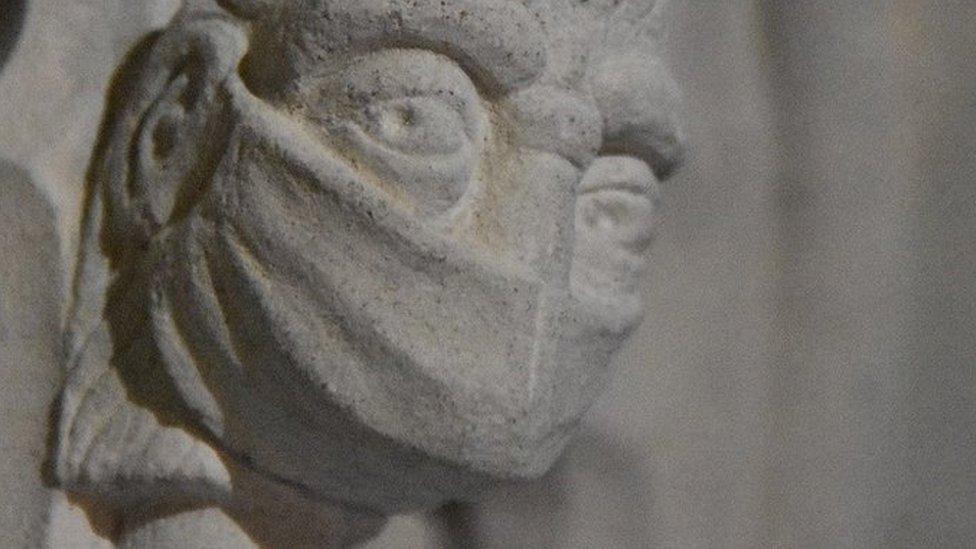Ely Cathedral: 'With crashing and banging the bell tower fell'
- Published
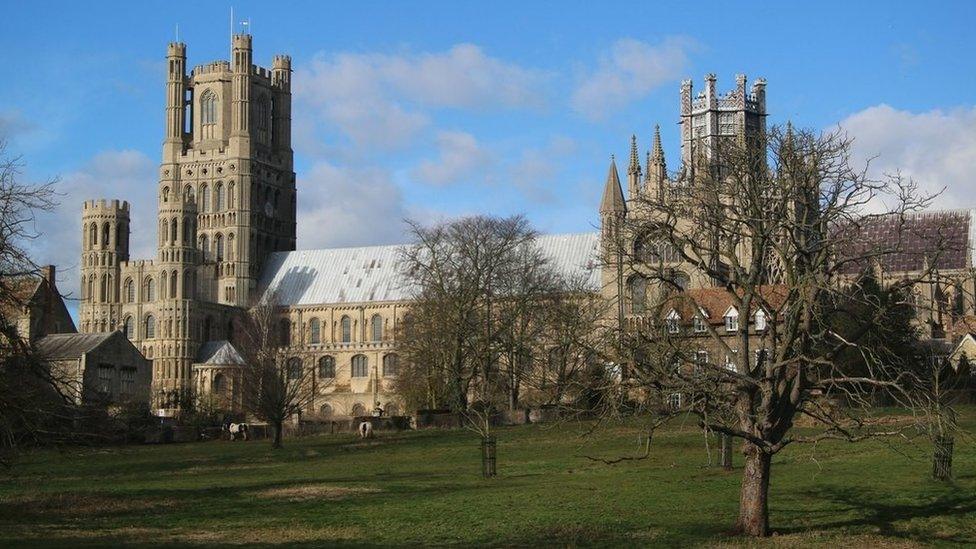
Ely Cathedral's Norman bell tower was replaced with its Octagon Tower (right)
A cathedral is marking the anniversary of the collapse of its bell tower, which "fell with much crashing and banging" 700 years ago today.
The Benedictine monks of Ely Abbey, in present day Cambridgeshire, external, had been awaiting the disaster since cracks appeared in its stonework in 1321.
The tower fell shortly after the 04:00 Matins service, external on 13 February 1322.
Ely Cathedral, external guide Mark Bradford said the monks had only just gone back to bed when the Norman tower came down.
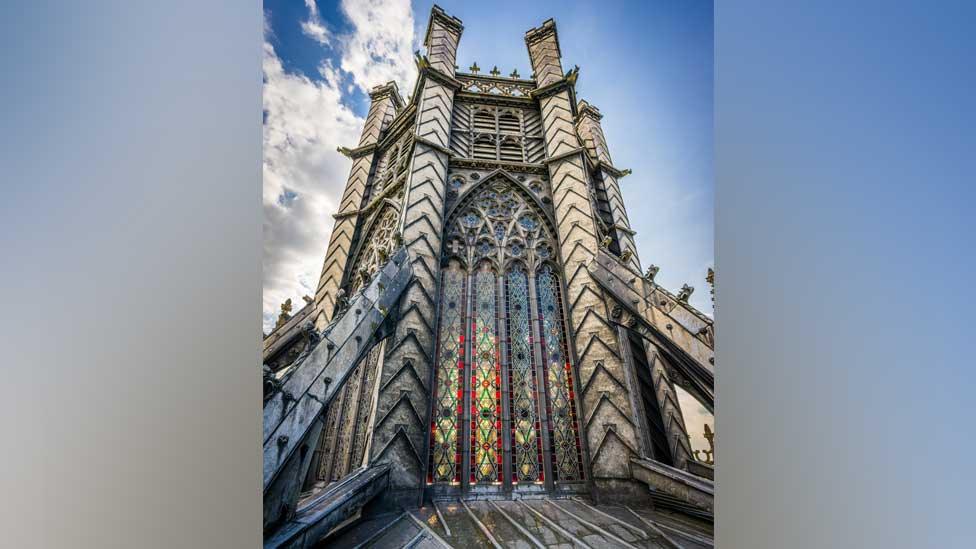
Within a year of its collapse the monks had a plan for a new, better tower
However, they were fully aware of the risks posed by the structure and had been holding their many daily services outside.
Mr Bradford, 61, said it became unstable when work began on building a Lady Chapel a year earlier, resulting in water rapidly undermining its 5ft 8in (1.72m) foundations.
He said they recorded the collapse with the following words: "Scarcely had a few of the brothers got into bed and behold, suddenly all at once, the bell tower fell with much crashing and banging, as though there had been an earthquake."
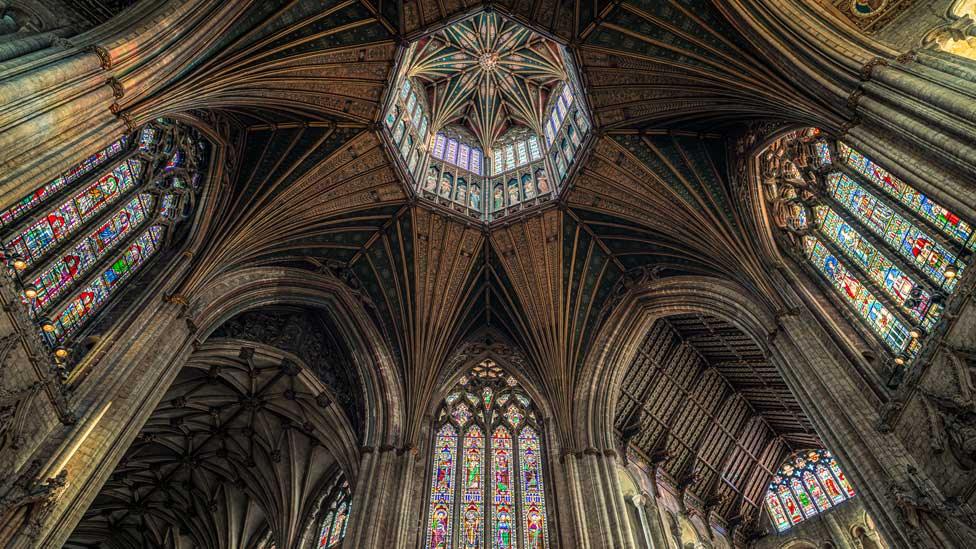
The new eight-sided tower is wider than the old one and is spanned by a 71ft (22m) wooden lantern
Within a year, they had a plan to rebuild bigger and better.
Three men oversaw the creation of the now iconic Octagon Tower within 20 years - Prior Crauden, who was good at extracting money from royalty and aristocrats, Sacrist Alan of Walsingham, who designed the new tower, and Ely's Bishop Hotham, who spent a lot of his own money on the rebuild.
It cost £2,406 6sh 11d - equivalent to about £3.5m in today's money.
Mr Bradford said: "Alan of Walsingham used the eight-sided tower to link the four parts of the building together and as this resulted in a wide, squat tower, added a huge wooden lantern with a vaulted ceiling, spanning 71ft (22m)."
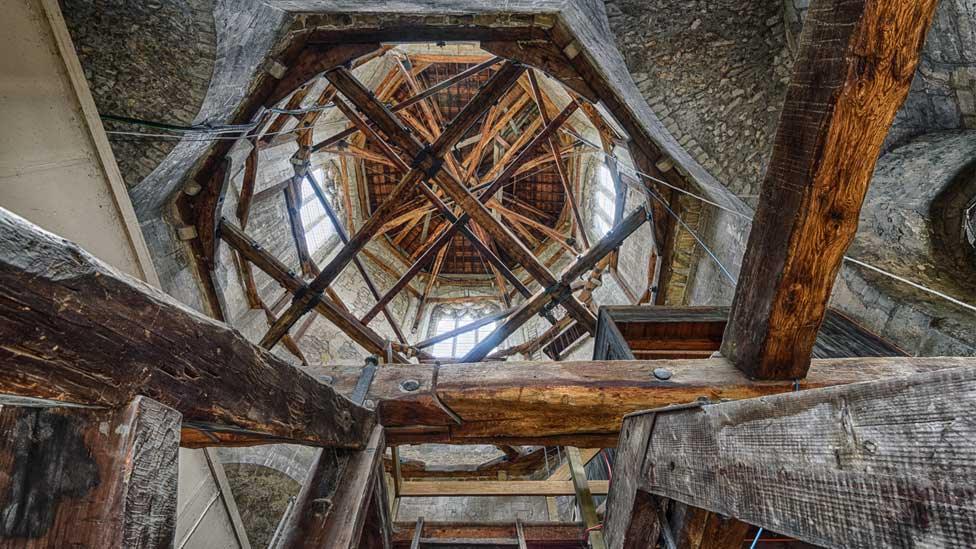
Huge oak trees were used in its construction, which visitors can explore in behind-the-scene tours
Edward III's carpenter, William Hurley, and eight master carpenters were responsible for the actual construction.
Since the Victorian era, it has been believed eight 60ft (18.2m) oak trunks were used to create the lantern.
But Mr Bradford's research in the cathedral's archives during the pandemic revealed this was not the case - instead they balanced 20ft (6m) trunks on 40ft (12m) trunks in an "even greater engineering feat".
The records said Alan of Walsingham "grieved vehemently and was overcome with sorrow" at the collapse of the bell tower, yet its successor is considered one of the glories of medieval England, external.
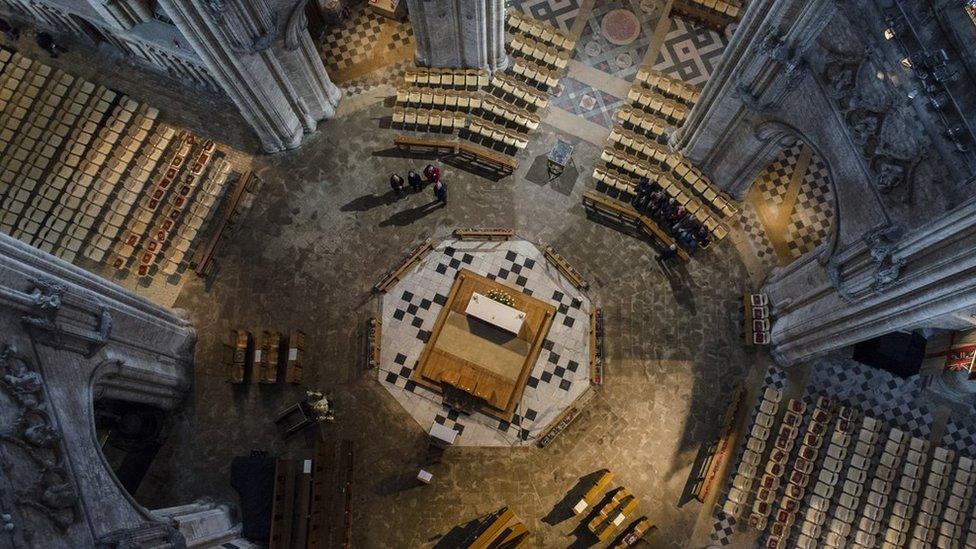
Visitors can look down from the lantern to the body of the cathedral, as well as climb out onto its roof

Find BBC News: East of England on Facebook, external, Instagram, external and Twitter, external. If you have a story suggestion email eastofenglandnews@bbc.co.uk, external
Related topics
- Published26 November 2021
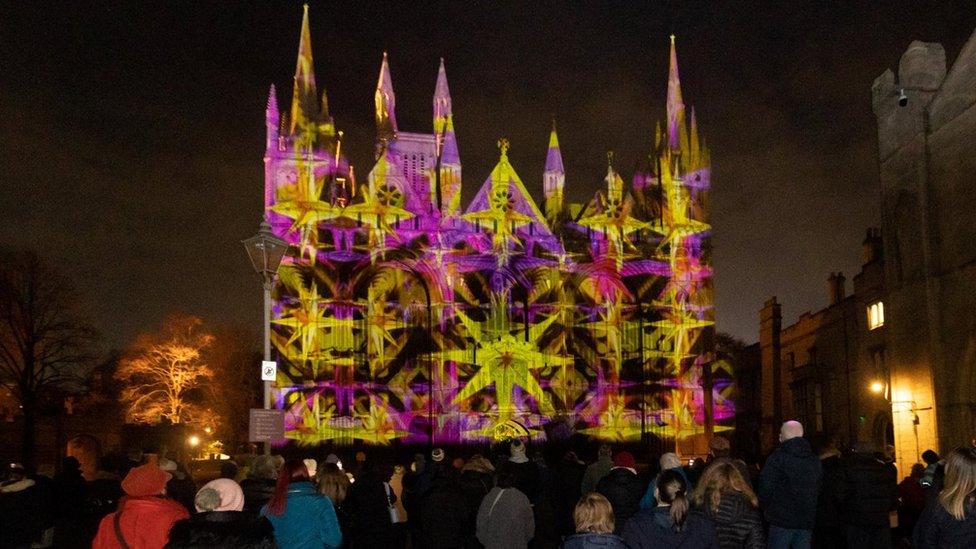
- Published21 November 2021
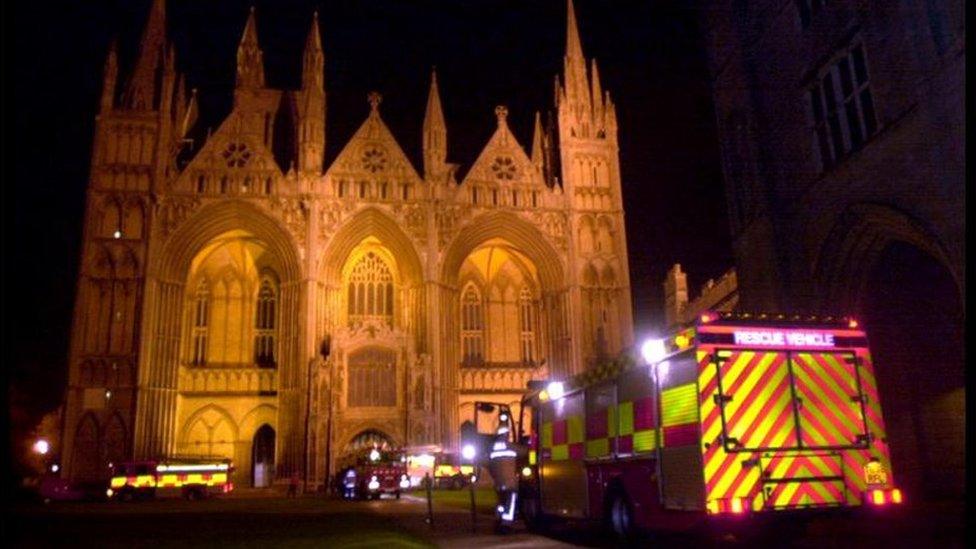
- Published21 June 2021

- Published7 May 2021
